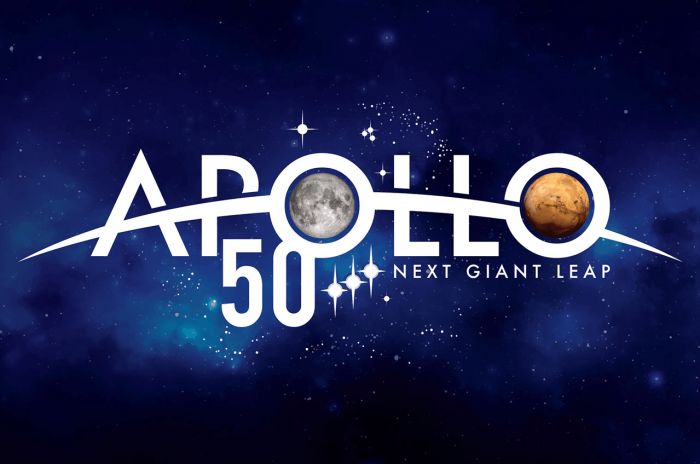Small Steps to Giant Leaps: Celebrating Apollo 50 Years Later
“That’s one small step for a man, one giant leap for mankind.” These are the iconic words spoken from the surface of the moon on July 20, 1969 by Neil Armstrong, almost 50 years ago. From October 2018 through December 2022, NASA will mark the 50th anniversary of the Apollo Program that landed a dozen Americans on the moon between July 1969 and December 1972. To learn more about the missions, you can explore the NASA Apollo Missions website.
December 12, 1972, Apollo 17 Mission Commander Eugene A. Cernan is standing near the lunar rover
What was Apollo? Apollo was the NASA program that resulted in American astronauts making a total of 11 spaceflights, 6 lunar landings and over 72 total hours exploring the moon’s surface in spacesuits. Project Apollo’s goals went beyond landing Americans on the moon and returning them safely to Earth. They included:
- Establishing the technology to meet other national interests in space.
- Achieving preeminence in space for the United States.
- Carrying out a program of scientific exploration of the moon.
- Developing human capabilities to work in the lunar environment.
Fifty years ago, in the summer of 1968, NASA was preparing for the first crewed Apollo mission. Apollo 7, scheduled for launch in October, was the first American crewed flight since Gemini 12 in November 1966, and marked a resumption of human space flights halted by the Apollo 1 fire in January 1967. The Apollo 7 mission was followed by ten more missions, from 1968 to 1972, that orbited 24 humans around the moon and landed 12 on the surface. The six Apollo missions that landed on the moon returned 420 kg (842 lbs) of lunar material back to the earth for research and education. Teachers can be certified to use samples of these lunar materials for use in the classroom with the Lunar and Meteorite Sample Disk Program.
Since the triumph of America’s first lunar landing, the technologies developed to enable NASA to make human space flights and explore the Moon continue to enhance our way of life. Transferring and commercializing the Apollo technologies have contributed to strengthening the U.S. economy and bolstering our country’s global competitiveness.
Shoes using NASA Apollo Technology
Since Apollo, about 1,300 documented NASA technologies have benefited U.S. industry, improved the quality of life and created many jobs for Americans. These innovations have helped industry and manufacturing, agriculture and food, environment and resource management, recreation, health and medicine, transportation and public safety, and communications and computers. Without the nation’s space program, some everyday products and processes we take for granted may not have been developed. You can learn more about these Apollo technology transfers (spinoffs) at the NASA Apollo Spinoff website.
NASA has resources for 5-8 students and K-4 students to help them explore and understand the importance of the Apollo missions. More on the Apollo 50th anniversary will be developed and included on the NASA Apollo Program website as we journey through the next four years of celebration.
Steve Culivan
Educator Professional Development Specialist, NASA STEM EPDC
Stennis Space Center

